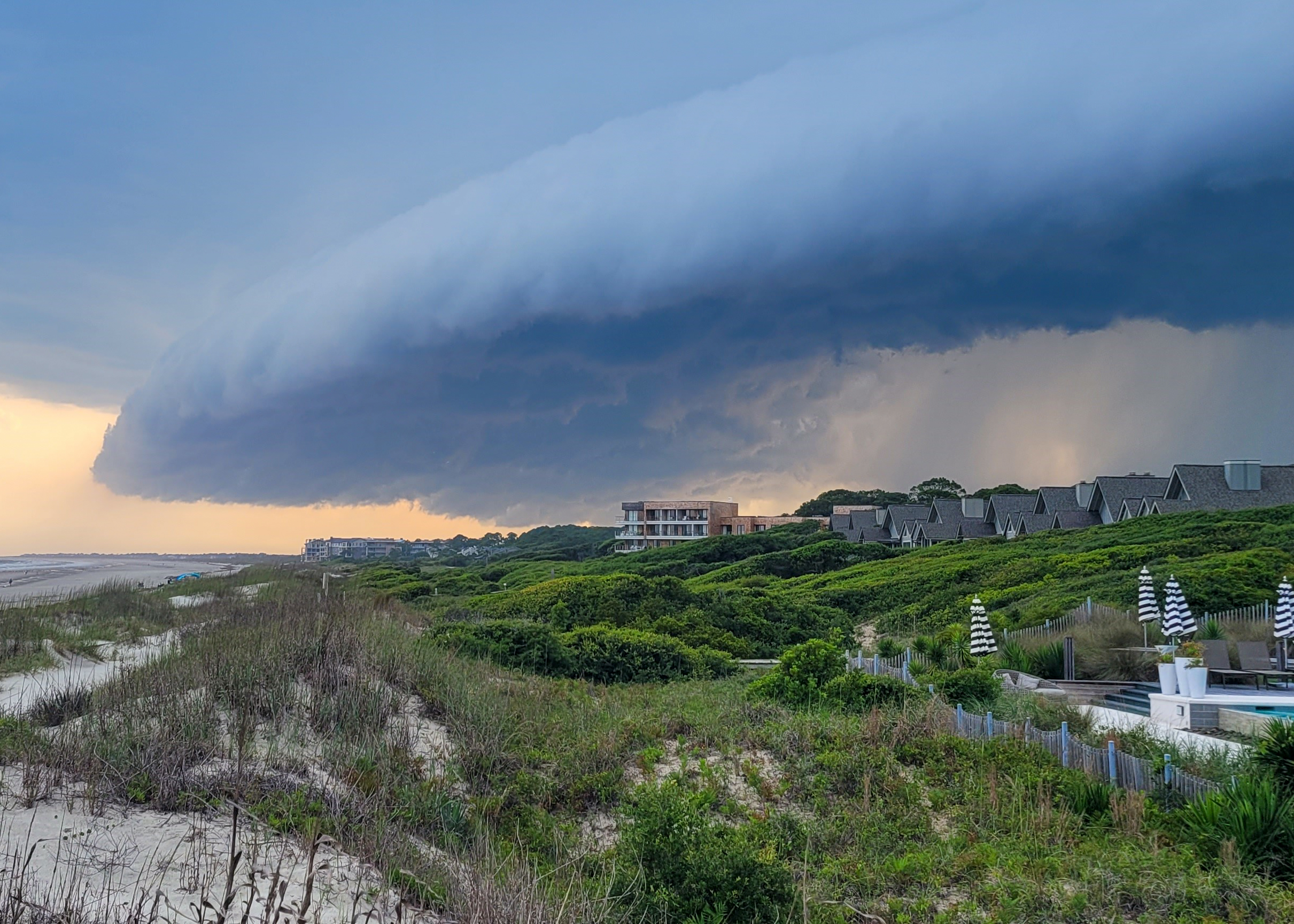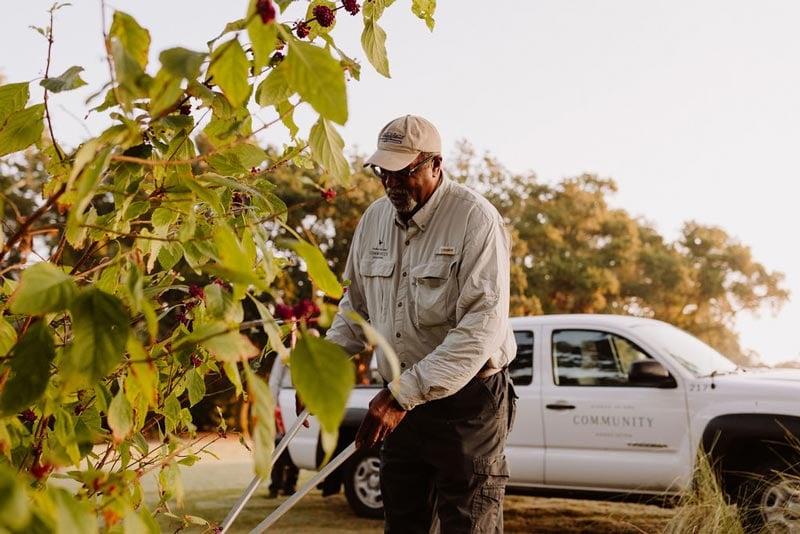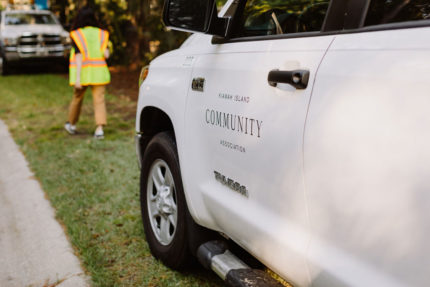Sep
08
2023

From The Blog
The Role that Stormwater Management Plays During Hurricane Season
The island’s pond drainage system and the infrastructure that supports it are some of KICA’s primary responsibilities. As a barrier island, it’s essential to ensure that water is efficiently moved into Kiawah’s gravity-based drainage system and out into the watershed. While this need is even more apparent during a storm event, there is little the drainage system can do to impact the severity of a storm’s tidal surge effects. Below, we’ll cover how preparation before a storm and responsiveness after are the key pieces of the drainage puzzle.
How Island Drainage Works
Kiawah’s ponds were constructed to serve as stormwater retention ponds, designed to pass water runoff through KICA’s drainage system and off the island efficiently. The ponds are intended to receive roadway and golf course runoff in addition to rainwater and tidal flow. Kiawah’s lakes and ponds are connected to 10 outfall structures which allow surface water to drain through the island into the Kiawah River and then to the Atlantic Ocean for several hours before and after low tides.
Projects Making Drainage More Efficient
For many years, KICA has been engaged in working to optimize the island’s drainage system. For example, the association annually budgets for the repair and replacement of drainage pipes on the island. For many years, KICA has been cleaning out, taking video, and lining many of the older metal pipes on the island to optimize drainage. In addition, six problem areas were identified through the Flood Mitigation projects, approved by the members in 2020. With the projects nearly all completed (the second phase of Project 6 at Trumpet Creeper is outstanding), water is able to move more efficiently off the island, and improvements have been evident in the areas of impact.
Other smaller optimization projects take place throughout the year. For example, before and during hurricane season, the island’s storm drains are cleaned out to help ensure they are functioning properly.
Before A Storm – Preparing the System
With several days’ notice, these connected lakes and pond water levels can be lowered in order to accommodate excess surface water. KICA manages 10 outfalls where gates allow water to flow into or away from the island. The two largest drainage basin outfalls can be operated remotely by KICA staff, enabling staff to be more responsive to severe weather events regardless of where they are. The team may also proactively lower water levels in the system to allow additional capacity for rainfall. However, pond lowering is not a one-size-fits-all solution, and it can come with detrimental side effects for pond health, so it requires expertise and a strategic approach.
As a storm approaches, KICA will test and equip staff with mobile pumps that can be deployed should the need arise, and critical stormwater drains will be cleared to ensure proper functioning. Finally, the Lakes team will close the island’s outfall gates before a storm, preventing tidal in-flow to the ponds in order to reserve pond capacity for rainfall.
During A Storm
As we saw with Idalia, some of a storm’s most potent impacts can be from storm surge, especially if a surge coincides with a high tide. During a storm surge, winds from a storm push water up onto the island on the ocean side, but also from the Kiawah River and surrounding marshland. Unlike a rainfall event, this type of flow can’t be addressed by the drainage system. Simply put, the island’s pond network can’t hold the ocean. While proactive planning may create additional capacity for heavy rainfall, a storm surge is an insurmountable amount of water.
How to Stay Safe During a Storm
KICA and other island entities encourage members to leave if an evacuation is issued, or if you simply don’t wish to stay through severe weather. If you decide to leave, give yourself time to do so safely. Once the storm impacts have begun, the window to leave the island has closed.
If no evacuation is issued, as with Idalia, the safest course of action is always to remain at home throughout the duration of the storm. By venturing out onto roadways during a storm, you put yourself and potentially island security or first responders at risk. KICA’s security does stay on the island if no evacuation has been ordered, and will conduct patrols if conditions allow. Security will place cones or close roadways as needed in the event of flooding. Kiawah experienced significant flooding during the extraordinarily high tide associated with Idalia, which could have been very dangerous for individuals driving around the island.
After a Storm Event
After a storm, staff will assess island pond levels and the integrity of drainage infrastructure, and respond. If needed, outfall gates will be opened before low tide so that water can drain away from the island as the tide lowers and pulls it out. For the two largest drainage basins, staff can open storm gates remotely with electronic outfalls, but for the other eight, staff must be on the island to open the gates manually. Storm surge must first recede and then the drainage system will begin to move water from the island once tides are below 6 feet.
In the case of Idalia, another higher-than-average tide was expected the morning following the storm, so outfall gates were not opened immediately. Despite up to four inches of rain in some areas and an astronomically high tide, most of the island’s ponds were at normal or slightly above normal levels. A few ponds, including 56 and 61 on Trumpet Creeper, were overtopped and flooded. Lakes Supervisor Matt Hill noted, “The massive volume and speed of tidal inundation during the storm carries a ton of debris and clogs pipes, which is what happened at Trumpet Creeper and a few other areas.”
In remaining areas of standing water on roadways, staff will deploy the mobile pumps to help speed up water flow off the island. Like the stormwater system, pumps can only combat floodwaters that remain after tidal flooding has subsided. For Idalia, pumps were in place on Wednesday prior to the storm in order to be ready to use first thing on Thursday morning
Following Idalia, KICA’s MR&R department had a contractor suction out storm drains to remove debris that can clog drains and cause larger problems in the wider system if not removed. There’s also good news for the island’s most-impacted area at Trumpet Creeper: Flood Mitigation drainage improvements are scheduled for later in 2023. KICA civil engineer Ryan Ellmers believes that, while this project would not have impacted the storm surge, “post-storm efforts would have been minimal had it been able to drain efficiently.”
Resilience
Although stormwater management is something most members only consider when a storm is imminent, or flooding is occuring, it’s one of the most critical priorities of the association. Maintenance and preparation are key, but as importantly, it takes experienced staff to navigate the unique variables that each storm brings. The work of our team was evident in the response to Tropical Storm Idalia, but every day they are proactively working to ensure Kiawah’s long-term resilience.

